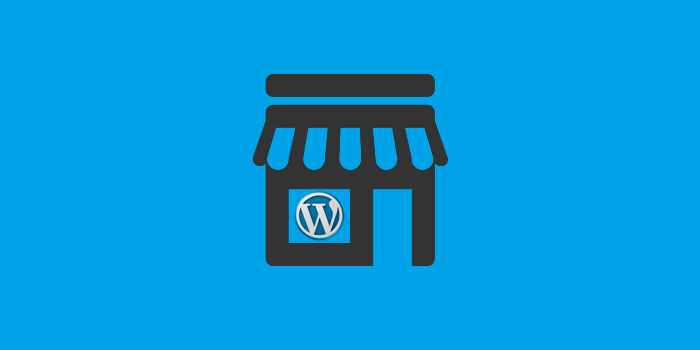Lucy Barret
Lucy Barret is an expert Web Developer for HireWPGeeks . She is currently handling all major Wordpress Development projects with her team of developers. Get in touch with her now for any queries regarding WordPress development.
WordPress is awesome for many things, but is eCommerce one of them?
As a WordPress developer, I get this a lot. The anxiety is justified: “Everyone knows WordPress is a blogging platform. How could it do eCommerce if it’s just meant to publish blog posts?”
And I am not denying any of it. It’s true that WordPress began, and remains to this day, a blogging tool at heart. But it has evolved into a powerful web-app development framework since then, too. Put it this way: WordPress can be whatever you need it to be, and as long as you have developers who know what they’re doing, it can make a fantastic eCommerce portal, too.
However, your challenges as an online store owner are far from over. Here are a few you might face in the course of events:
Note: This article addresses issues faced by self-hosted online stores built on WordPress using WooCommerce. If any word in that sentence is tripping you up, this isn’t the article for you.
WordPress works on a theme-based design system. That’s all well and good for a lot of things: easier, faster development, uniformity in design, etc., but for online stores, it’s a whole different kind of trouble altogether.
As an entrepreneur, you obviously want something special, unique, and beautiful for your site design, something that captures the essence of your brand’s visual identity and tells it like a gripping tale of epic proportions to every visitor that comes across it.
So you buy an awesome-looking premium theme for a few bucks, only to feel cheated once you see your site ‘wearing’ it.
Most themes are not designed for specific industry types.
Commercial themes are (usually) multipurpose, which widens the field so much that every other store starts to look the same. Besides, is your theme even designed for an online store?
This is what you need in a great theme for your online store:
The form of your theme comes after the function. Remember that.
Internationalization-ready themes are also good to have (if you intend to sell to a global audience). Make sure your theme is translation-ready with .po/.mo files, supports RTL (check for rtl.css stylesheet in theme directory), and is compatible with the WPML translation plugin.

Managing a store is not as easy as adding posts to a blog. There are checkout, cart, billing, shipping, etc. to take care of. The thought is enough to make anyone break out in cold sweat.
Relax. You just need this plugin: WooCommerce Poor Guys Swiss Knife
This plugin is responsible for making the lives of thousands of WooCommerce-powered merchants easier. It has a ton of features, handily grouped in categories by Shop, Label (text), Cart, Checkout, Localization, Billing, and Shipping (so merchants don’t have to spend time learning the tech lingo).
The plugin is easy to use and very extensive: It supports all input types and data (so play with those interactive form elements as much as you like), adds a second layer of validation for increased security (like Two-Factor Authentication), can serve dynamic content to your site users across the ocean for a localized experience, and more.
There are two more versions (hilariously named ‘Rich guy’s Swiss knife’ and ‘Extra Swiss knife’) for added features. In any case, all three make day-to-day store management easier.
Poor guy’s version is free.
You can ask your developers to extend WooCommerce using REST API with an ERP tool for super-fast/automated processes.

Sometimes, online retailers forget that their store is also a website and, therefore, needs technical maintenance. This can be dangerous if overlooked, especially since you’re conducting transactions on your site with customers’ hard-earned money.
There’s no shortcut to it, but many plugins will expedite the process considerably. Some things you need to keep in mind are:
Whatever you do, do NOT take security and maintenance lightly. If you get hacked, you lose more than a domain; you lose any progress you have made towards success.

People still think SEO is not related to Performance when developers know that, at this point, they might as well become one officially.
This is where you can truly harness the power of WordPress. This is the part that makes every other obstacle worth it.
Here are some things you can keep an eye out for:
Yoast SEO: This plugin is a WordPress classic and very extensive. Make sure your developers, as well as copywriters, work with it to ensure maximum benefit.
Caching: The best solution I have found (especially for eCommerce websites) is W3 Total Cache. Install it, take your time configuring it, and if your estimated site traffic is high enough and spread out across the globe, get the MaxCDN that it integrates with so easily.
Front-end and Media: Your developers need to compress and optimize every product image and every bit of CSS and JS on the store’s front end to ensure that the side loads fast. Plugins like EWWW Image Optimizer do this for you.
Back-end Optimization: Get your PHP wizards on the task of optimizing server-side scripts, especially queries, for speed with Memcached, Redis, etc.
Your store will be fine as long as there’s a clear ‘separation of concerns’ between store management and site management. Keep the vending apart from code, and research UX and Conversions.
You’ll also receive some of our best posts today

Lucy Barret is an expert Web Developer for HireWPGeeks . She is currently handling all major Wordpress Development projects with her team of developers. Get in touch with her now for any queries regarding WordPress development.
Why Instagram? Does my business need an Instagram account?...
Every day, it seems there's a new security lapse...

User reviews are a game-changer for e-commerce. Consumers rely heavily o...
Don’t miss the new articles!